In between winter proper and spring proper is when the rarities and oddities that make up a well-structured garden shine. Now is the time to seek out the in-betweens to fill in the seasonal lull. Helleborus species is one of the most intriguing plants blooming in my zone 7 garden right now. Yes, even though it feels bitter outside with a howling wind and sideways rain (only in Washington do we have at least 100 different names for rain), it has been fairly mild this year. Nurseries are open but there are plenty of parking spaces right up front. Bare Root trees and shrubs are in bins and hellebores line the shelves. Helleborus are sometimes called ‘Christmas Rose’ or ‘Lenten Rose’, but here they should be called an In-between Rose. They were still dormant at Christmas, not wanting to stretch their heads above the soil as if there were no hot toddy’s waiting. Lent and Easter, changing as they do, are hard targets for a plant to hit on schedule. But right now, enjoying fitful, scarce sun, bowing to the blustery wind and creating color for raindrops to reflect are these wonderful hellebores.
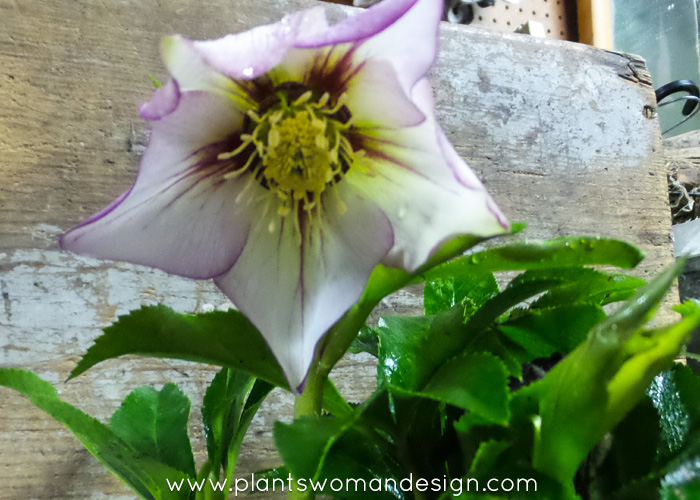
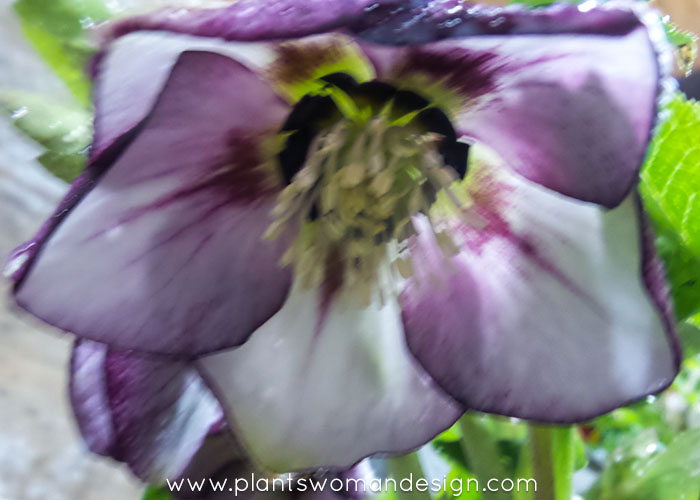
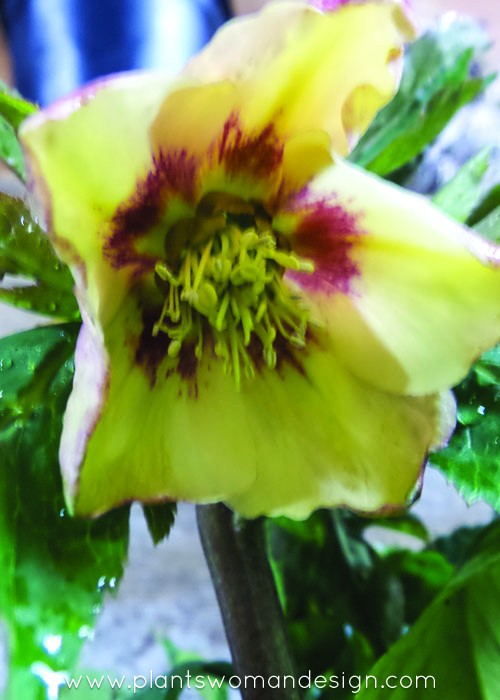
Recent introductions have created so many beautiful colors and shapes that even the hellebourophile (think Galanthophile) can find one never seen before. The Mardi Gras collection from Charles Prices breeding program are stunning. From the Slate Shades colors with plums and dusty purple/black to the Apricot Shades with sunny yellow touched with warm pink edges. They are so welcome this gloomy time of year.
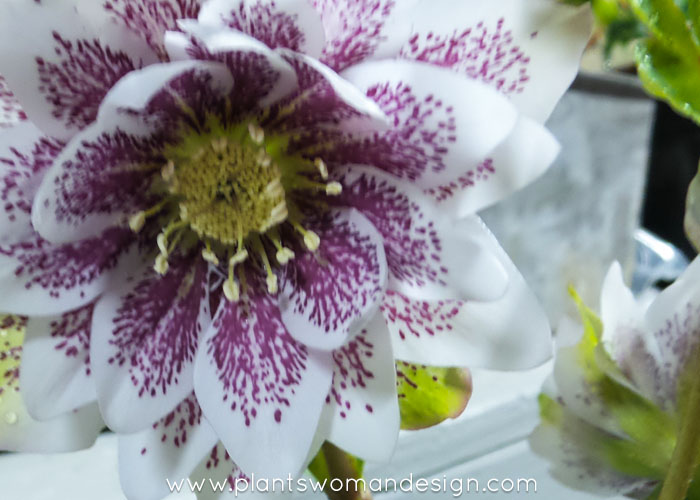
Another favorite breeder of mine is Marietta and Ernie O’Byrne from Northwest Garden Nurseries in Eugene, Oregon. They hand pollinate the seedlings they select and have made some beautiful, amazing helleborus. This lovely ‘Painted Double’ is one of theirs.
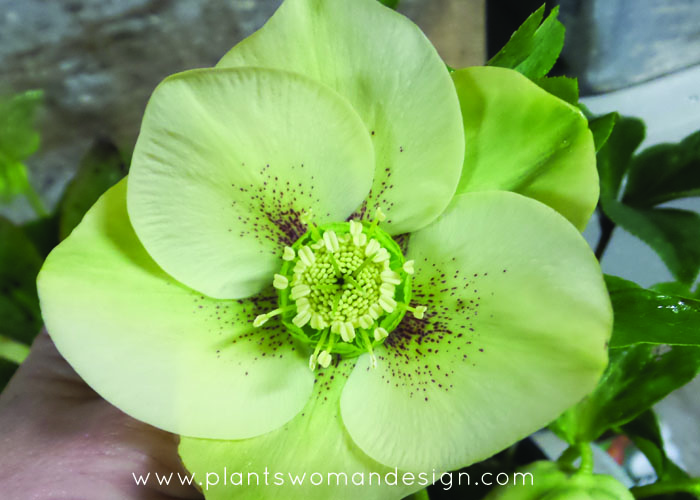
Occasionally there is a hellebore that catches my eye and has no name. This one is unmarked at the grower but I love the clear yellow/green with darker green micro petals. The small freckles of dark burgundy are just a touch of color. Maybe I should grow it on and name it, Freckled Rose maybe? After my sister Rose who has freckles.
Designing with Helleborous
As for design tips they are one of the most versatile plants I know. You can use them as evergreen ground cover with the flowers as an extra. The Mardi Gras Series have really nice palmate leaves that look good through the winter. Under planted with snowdrops, aconites, and anemones they will create an unforgettable display. I had one that I displayed in a large urn by the front door. I simply pulled it out of the garden about now and popped it in the urn. It was really easy to see as the elevation of the urn helps being able to view the downward facing flowers. After they started to fade I pulled the whole clump out of the pot and put it back in the garden. I used the same plant in this manner for about 5 years then changed to another more ‘current’ variety. They are really easy and forgiving (obviously).
BLOOM – January – March.
PLANT – Moist, (not wet) loamy soil, lighten with leaf mold.
HABIT – Hardy to Zone 5, spreading slowly 15 – 18” high and up to 2 feet in spread.
WHERE – Plant them in half shade to full shade. I find they flower better with a good splash of morning sun. They like shelter of big trees and open shade.
TYPES – Helleborus argutifolius, hybrids, nigers and foetidus with lots of promiscuity thrown between them
WHAT TO EXPECT – Plants, that when happy spread, produce seeds and seedlings to share, can be used as cut flowers. Some helleborophiles cut the leaves off in the spring so the flowers show to advantage. They will cross-pollinate in your garden so you may someday have a seedling that no other gardener has.


